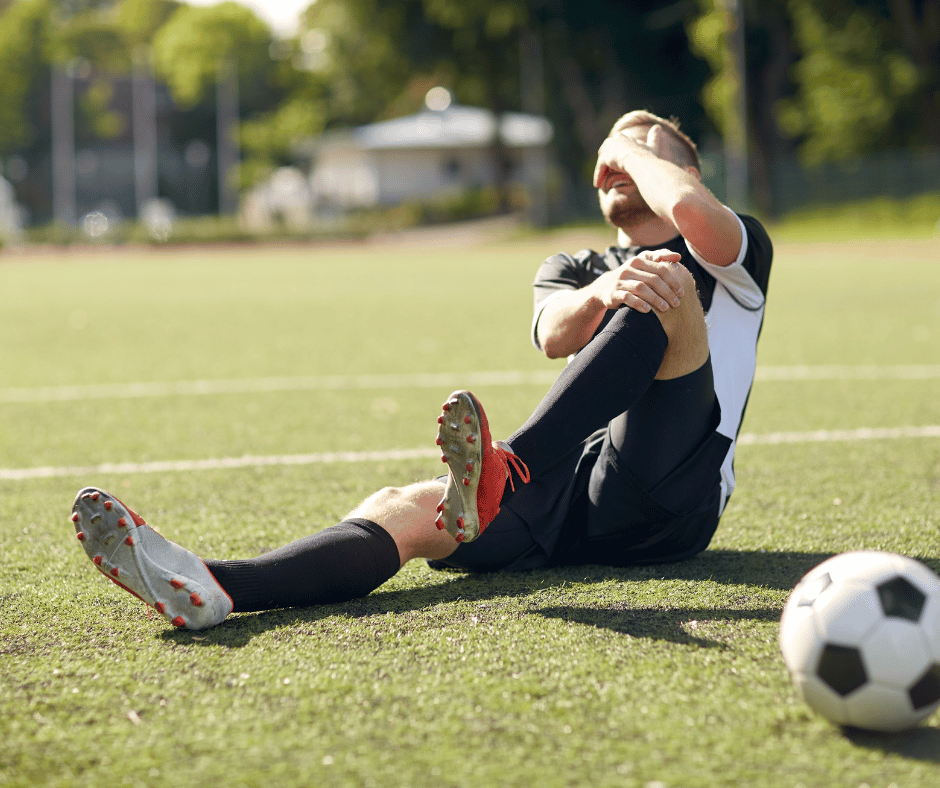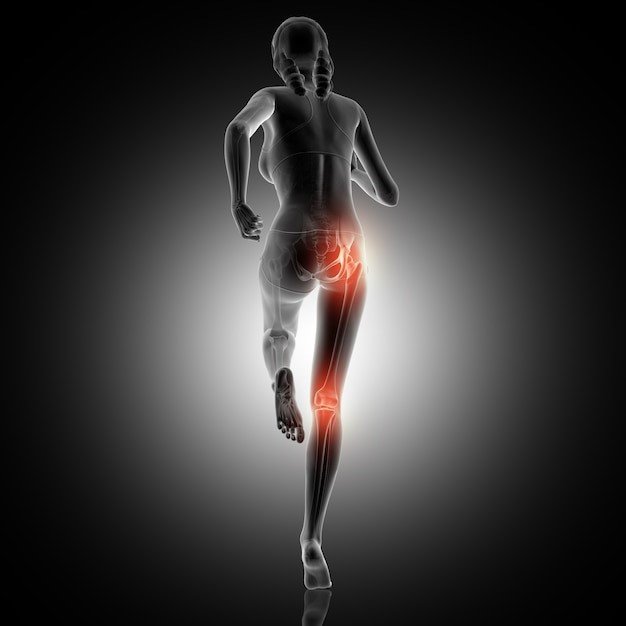
Blog
Training Ideas, Do’s & Don’ts, Clinical Research & More!

Why Running Injuries Occur and How to Reduce Your Risk
Running injuries; how to prevent them. If you’re a runner frustrated with recurring running injuries and want to run pain free, this is for you.

The Rehabilitation Journey at Back to Bounce
At Back to Bounce Sports Physiotherapy and Exercise Physiology, rehabilitation is more than just recovery from injury. Our aim is to help you move better and feel more confident and empowered throughout your journey. We focus on long term solutions, preventative care and helping you be your best, with support and guidance from our expert team of health practitioners. At Back to Bounce, our approach isn’t about quick fixes or recipe-based treatments, but a deep dive into why and how. Why an injury may have occurred, and how we can address these aspects through long term solutions.

Acute Shoulder Injury Rehabilitation
Acute shoulder dislocations and subluxations are common injuries—especially among young, active individuals and athletes. Modern research now shows that while prompt reduction and pain management are essential in the acute phase, a well-structured rehabilitation program is key to restoring function, preventing recurrence, and minimising long-term instability. In this blog, we’ll explore the causes and symptoms of shoulder dislocation, as well as the vital role physiotherapy plays in helping you recover faster and more effectively. Whether you're dealing with the injury yourself or helping a loved one through the healing process, understanding the benefits of physiotherapy can be the key to a smoother, faster recovery.

Common Ankle Injuries in Sport
The ankle plays a vital role for athletes, and its vulnerability to injury is high due to the physical demands it faces. Gaining knowledge of common ankle injuries can aid in prevention, early detection, and a quicker recovery. Below is a summary of the most common ankle injuries encountered in sports.

Your Ultimate Guide to ACL Rehab
If you or someone you know has recently or previously experienced an ACL injury, or are on the road to recovery, it is important to know that rehabilitation is a significant part of this journey. This blog post will guide you through the complexities of ACL rehabilitation, providing expert advice, helpful insights, as well as tips and exercises that can aid in your recovery. In this blog we explore surgical management, the Cross Bracing Protocol and conservative management. Regardless of your treatment choice, restoring your knee's function, your confidence in movement and getting you back to your sport and the activities you love is our ultimate goal at Back to Bounce Sports Physiotherapy.

It’s Healthy Bones Action Week; what you can do to build bone health
It’s Healthy Bones Action Week and we are talking about the importance of taking care of your bones. Nutrition and appropriate exercise are two important factors in building and maintaining bone health.

What is the Cross Bracing Protocol? Non-surgical management of ACL rupture
Traditionally, it was understood that if you rupture your ACL, surgery was necessary to return to playing sports. An ACL rupture often required surgical intervention followed by extensive rehabilitation to restore strength and stability. Whilst effective, this approach involves a prolonged recovery period and isn't always suitable for everyone. Innovative research indicates that for specific types of ACL ruptures, there’s an alternative approach which can lead to ACL healing without surgery, via the Cross Bracing Protocol. This new alternative to surgery is promising for many individuals who do not want to undergo surgery. In this blog we explore this conservative management program to help facilitate healing of the ACL.

Play safe: your guide to ACL Injury Prevention
At Back to Bounce, we specialise in ACL injury prevention and rehabilitation. We guide patients through the rehabilitation process to recover from injury and return to high level performance and sport. In the world of sports, agility and strength are key, but so is injury prevention. Among the most dreaded injuries for athletes is an ACL rupture—a setback that can bench you for months or even end a season. Whether you're a seasoned athlete or recreational sportsperson, understanding how to protect your ACL (anterior cruciate ligament) is crucial for staying in the game, doing what you love.


Key facts about Persistent Pain and what you can do to manage it
What if pain from an injury stays around for a quite some time? What if that pain stopped you from doing things you want to do, or are good for you? The good news is, that the more you learn about persistent pain, the more empowered you are to manage it. In the world of pain science what we do know if that the primary purpose of pain is to protect us; it tells your body to get moving to get away from potential damage. If you experience persistent pain that lasts longer than three months the good news is you’re not alone. Chronic or persistent pain affects more than 3.6 million Australians and is a leading cause of disability. Ongoing pain can affect an individual’s ability to actively participate in social connections and can have negative effects on mental health, relationships, exercise and capacity to work.

A real pain in the butt; how to manage Piriformis Syndrome/Sciatic pain
Piriformis syndrome is a condition that affects the piriformis muscle and sciatic nerve at the back of the hip and pelvis. This small but mighty muscle plays a crucial role in hip rotation, pelvic control and stability. Piriformis syndrome is common in runners and athletes. This blog explores what it is and how to manage it.

Defining and Managing REDS; more than just ‘overtraining’
Athletes who are passionate about their sport and driven to perform often push boundaries in the quest to achieve specific goals, targets and reach success in their sport. Periods of prolonged overtraining can have ongoing consequences and can often lead to the diagnosis of a syndrome defined as REDs (Relative Energy Deficiency in Sport). REDs is characterized by low energy availability, affecting both male and female athletes of all levels and ages. It has adverse effects on various systems and can affect long term health. The quest to achieve athletic potential can come with a cost to bone health, reproductive function and immune function to name a few. Up to 80% of athletes are at risk of developing REDs and early diagnosis is key.

Running Related Injuries; When you should get help
Many runners experience pain and niggles and it can be difficult to know when it is ok to continue training through pain and soreness, or when you need to modify training or take a break from training. Before the running season starts, we discuss some common running-related injuries in this blog.
The information should always be taken into context of the individual’s running goals, biomechanics and injury history. It is also important that you gain an accurate assessment and diagnosis to ensure the appropriate management is being taken to improve your injury.

Measure to Improve; How we use the VALD Force Decks
The innovative VALD Force Deck technology provides us with various metrics, data and insight into your injury, asymmetries and deficits. With this information we are able to create a tailored rehabilitation program designed to best suit you as an individual.

Unleashing potential; sport performance for adolescents
In this blog, we will look at what the current research says on performance training for adolescents. We look at the most effective ways to stay injury free and the best practices for enhancing athletic ability and reducing injury risk for adolescents, understanding that growing bodies need specific considerations.
Our new Sports Performance classes at Back to Bounce offer a program to help guide adolescents to perform at their best.

HIP HIP HOORAY; solutions for your hip pain
Have you been experiencing hip pain that keeps you up at night? Hip pain with sitting, playing sport or driving? Maybe you’ve had an MRI or X-ray that reports a labral tear, osteoarthritis or bursitis. Never fear, at Back to Bounce Sports Physiotherapy we have experienced physiotherapists who have completed extra training in sports, exercise and hip pathology diagnosis and rehabilitation. In this blog, we explore some common hip injuries and discuss treatment options. Today we will explore three common types of hip pain that we see at Back to Bounce Sports Physiotherapy; Osteoarthritis, Hip labral tear and Femeroacetabular Impingement.

The healing power of Hydrotherapy; benefits for enhancing rehabilitation and managing pain
Hydrotherapy has many benefits for managing pain and enhancing rehabilitation following surgery, hip, knee and back injury. We explore how it helps enhance injury recovery and why it makes us feel so good.

Dealing with Gluteal Tendinopathy; what it is and how to manage it
Gluteal tendon pain can be debilitating and can often affect the individual’s ability to participate in exercise and activities they love. In this blog, we explore what causes gluteal tendinopathy and how to manage it effectively.

Bounce to Build Bones! What you can do to prevent and manage Osteoporosis
Have you or a loved one been diagnosed with Osteoporosis? Are you unsure about what to do?
Being informed of how to manage Osteoporosis can help you take control in improving your bone strength. Read on to learn about what you can to do help build your bone health and why it’s important to never lose your bounce!

Managing Osteoarthritis; what you need to know
Have you been diagnosed with Osteoarthritis? Have you had a scan which shows degenerative changes in your joint or wear and tear in your cartilage? Are you confused about what your options are?
We explore various strategies of Osteoarthritis management and how you can improve your symptoms to continue doing the things you love.
